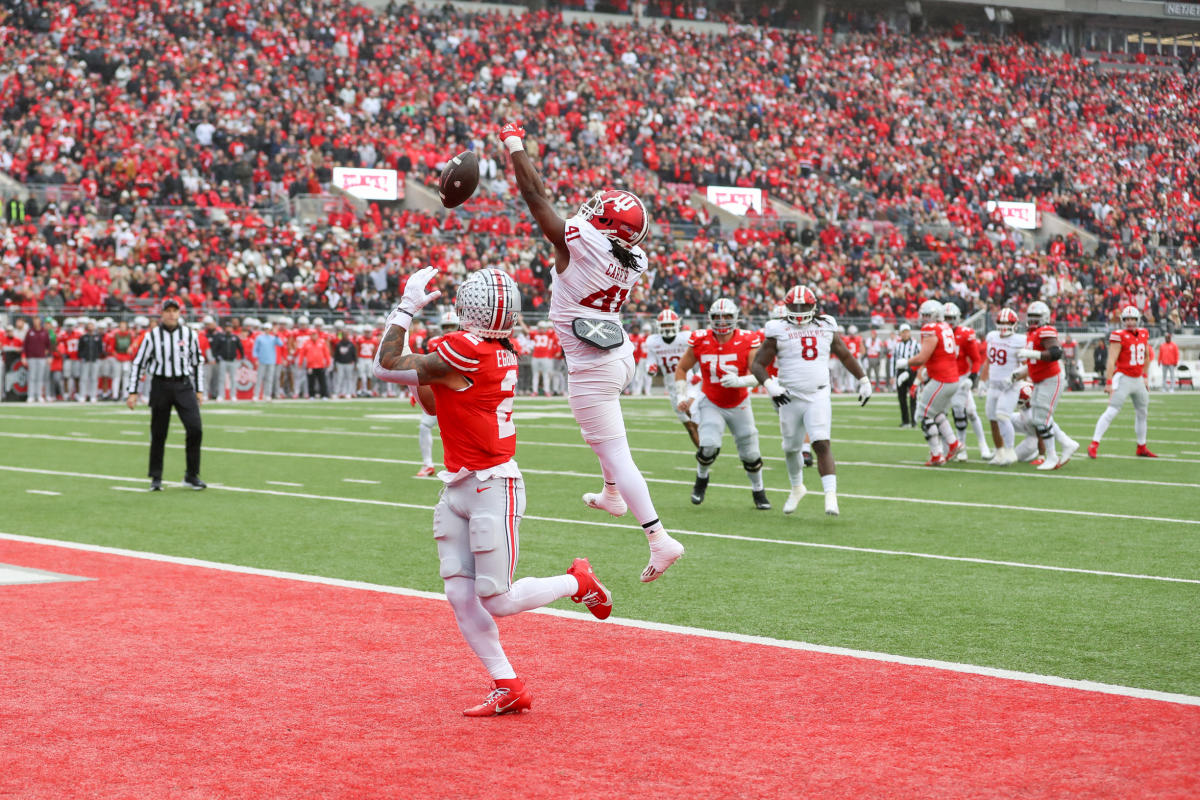
Thousands of industry donors poured over $425 million into the general election this year, mostly backing the Republican Party and its pledges to repeal regulations and cut taxes.
Many businesses have bristled over the past four years at President Joe Biden’s regulatory agenda, and nearly every industry is salivating at the prospect of notching bigger wins as negotiations on a mammoth tax package pick up.
The majority of industry’s financial support — nearly two-thirds — went toward boosting Republicans, according to a POLITICO analysis of campaign finance filings. That turned out to be a good bet: Of the money the business community spent on GOP candidates, over 90 percent went to winners. Industries like agriculture and defense came out ahead with nearly all their backed candidates winning, including House Ag Chair Glenn Thompson, who received $380,000.
On the flip side, Democrats, who had campaigned on raising corporate taxes and reining in major corporations, received only 36 percent of industry contributions — of which 64 percent went to winning candidates. Some of the biggest donors there were from the health and labor sectors, including large spending from union-backed PACs and Planned Parenthood. Those two sectors posted the worst win rates, having spent a combined $28.5 million supporting Vice President Kamala Harris.
POLITICO looked at data from 2,400 corporate PACs, 39 super PACs with industry ties, and donations from CEOs of 100 large U.S. companies.
Some of the sectors that spent the most were funded by a handful of wealthy donors like Elon Musk looking to pad their bottom lines by electing like-minded lawmakers. And not every industry got a good return on the vast sum it invested.
Dive into the data showing the business world’s biggest winners and losers, and why three groups stood out:
Financial services, fueled by tens of millions of dollars in spending by the cryptocurrency industry, was one of the most notable winners on Election Day. The sector pumped $146 million into the elections — and when it invested in specific races, 87 percent of that spending backed eventual winners.
The money helped return Donald Trump to the White House and Republicans to power in both chambers of Congress, where the finance industry is banking on the GOP to embark on a sweeping deregulatory campaign and muscle through another round of tax breaks for the business community and top earners.
The election results brought a massive payoff for the crypto sector in particular, whose super PACs helped unseat one of the industry’s most powerful critics in Congress, Senate Banking Chair Sherrod Brown (D-Ohio).
Defend American Jobs, one of three crypto-backed super PACs, spent $60.1 million overall funding Republican winners, most of which backed Brown’s challenger, Bernie Moreno.
But crypto didn’t just oust a top foe. Its cash also helped elect what advocates have dubbed the most crypto-friendly Congress ever, with industry allies poised to be the ones shaping new laws that would regulate digital assets.
Protect Progress, a sister PAC to Defend American Jobs, spent $21 million supporting Democratic Senate candidates Elissa Slotkin and Ruben Gallego, who both voted for industry-supported legislation while serving in the House.
“There’s going to be 200-plus pro-crypto representatives” in the House, noted Josh Fendrick, a former in-house lobbyist for Coinbase, a crypto exchange that funneled more than $73 million into the industry super PACs. The sector’s investments in Senate races, he added, also “achieve[d] their intended results.”
Though the transportation industry was nominally the second-largest spender in the election, the designation is because of just one man: Elon Musk, the Tesla founder-turned Trump acolyte.
Of the $140 million spent by transportation interests this cycle, Musk accounts for $133.2 million, thanks to his role as CEO of the electric vehicle maker.
The corporate PAC funded by employees for Musk’s space company SpaceX, meanwhile, was transportation’s fifth-largest PAC spender on the election, doling out $317,000 to a mostly Republican slate of congressional candidates.
Musk’s personal donations aren’t included in the industry’s win rate because Musk steered the vast majority of his spending to super PACs like his America PAC (to which he gave $118.6 million) and congressional Republicans’ campaign arms.
But there’s no denying that Musk’s investment in Trump’s win could stand to be priceless for the world’s richest man.
SpaceX is already one of the Pentagon’s biggest contractors. Tesla, meanwhile, has benefited immensely from federal subsidies, including during the Biden administration. Musk has called for eliminating a tax credit meant to boost EV sales — though such a move would likely kneecap Tesla’s competitors more. He has also backed the repeal of subsidies for building out the nation’s electric vehicle charging network that his company has benefitted from.
Last week, Trump tapped Musk to co-lead a new outside group dedicated to slashing government spending. That could mean eliminating what Musk views as red tape hemming in any number of his business interests, which also include a satellite internet service, the social media platform X and an AI startup. Musk has long complained of bureaucratic hurdles tripping up his companies, regularly accusing regulators of retaliation over his political views.
Separate from Musk’s personal political spending, the rest of the transportation industry saw one of the highest returns on its investment in the election — 93.8 percent of the sector’s spending backed winners.
There’s some overlap between Musk’s interests and those of the broader transportation industry, albeit for different reasons. The airline industry, for example, has chafed at many of the Biden administration’s consumer protection rules and efforts to clamp down on so-called junk fees. In addition to anxiously awaiting Trump’s moves on EVs, the auto industry will be keenly paying attention to the president-elect’s trade policies to ensure auto parts aren’t swept into any global back and forth on tariffs.
The labor movement saw one of the election’s biggest flops, with labor groups spending just 44 percent of their $70 million backing candidates who won. That’s not entirely surprising for an election in which labor’s allies in the Democratic Party lost both the White House and the Senate majority and failed to retake the House, but the disparity in the sector’s win rate is stark.
Biden enacted a number of progressive labor policies, including rules that would allow gig workers to be classified as employees, a ban on non-compete clauses in contracts and tougher worker safety standards.
Many of those advances have either been successfully stymied by the business community in court or will almost certainly be unwound by the Trump administration and Congress.
Vice President Kamala Harris benefitted the most by far from labor’s spending, with a total of $25 million in support of her campaign. For Our Future, a super PAC and the largest spender in labor, spent $5.5 million in support of Harris.
After Harris, the second-largest beneficiary of labor money was Sen. Bob Casey (D-Pa.), who lost to Republican Dave McCormick. Labor groups spent $3.9 million to boost Casey, including $1.6 million from For Our Future.
Labor’s other big losers were Brown, who benefited from $2.2 million in labor spending, including $1 million from a top nursing union, and former Rep. Mondaire Jones (D-N.Y.), whose race saw $1.8 million in labor spending.
Paroma Soni, Sean McMinn, Andrew Milligan, Madi Alexander and Jessie Blaeser contributed to this report.
EMEA Tribune is not involved in this news article, it is taken from our partners and or from the News Agencies. Copyright and Credit go to the News Agencies, email news@emeatribune.com Follow our WhatsApp verified Channel





